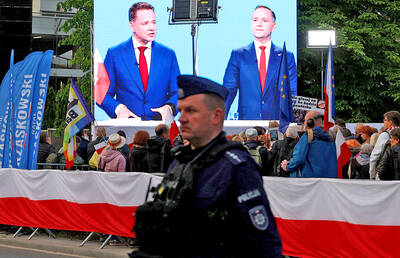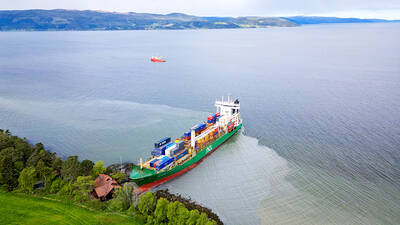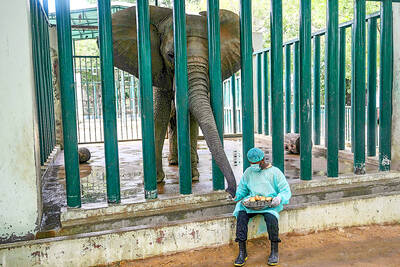Syria warned on Thursday that Israel was paving the way for new military action by alleging that Damascus is providing Scud missiles to the Lebanese militant group Hezbollah.
Israeli defense officials have said they believe Hezbollah has obtained Scud missiles capable of hitting anywhere in Israel and earlier this week, Israeli President Shimon Peres directly accused Damascus of providing the weapons.
If the Lebanese militants have acquired Scuds, it would mark a powerful boost to their arsenal and a breach of a UN-brokered cease-fire that ended the 2006 war between Hezbollah and Israel.
Israel has not offered proof to back up the claim, and Syria’s Foreign Ministry strongly denied the charge, saying it “believes that Israel aims through these claims to further strain the atmosphere in the region.”
It added that Israel could be setting the stage for a possible “aggression in order to run away from the requirements of a just and comprehensive peace.”
Speaking earlier this week, Israeli Defense Minister Ehud Barak insisted his country has no aggressive intentions.
“We expect and recommend that everyone keep the current calm, but as we’ve said, the introduction of systems that disturb the balance endanger the stability and the calm,” he said.
The allegation comes at a sensitive time in US-Syrian relations.
Washington has reached out to Syria in recent months by nominating the first US ambassador to Damascus since 2005 and sending top diplomats to meet with Syrian President Bashar Assad.
Washington is hoping to draw Syria away from Iran and the Islamic groups that Iran backs — Hezbollah in Lebanon and the Palestinian Islamic group Hamas in the Gaza Strip.
The US said on Wednesday it was “increasingly concerned” about the transfer of more sophisticated weaponry to Hezbollah.
Hezbollah leader Sheik Hassan Nasrallah has said his militants have more than 30,000 rockets and are capable of hitting anywhere in Israel. Those claims match assessments made by Israeli intelligence.
Some Scud missiles have a range of hundreds of kilometers, meaning that guerrillas could launch them from deeper inside Lebanon and farther from Israel’s reach.
Scuds can carry a warhead of up to 1 tonne, making them far larger than the biggest rockets previously in Hezbollah’s arsenal, and are also more accurate.
During the month-long 2006 conflict, Hezbollah fired nearly 4,000 rockets at northern Israel, including several medium-range missiles that for the first time hit Israel’s third-largest city, Haifa.
The war, sparked by a Hezbollah ambush of an Israeli patrol along the border, left 1,200 Lebanese and 160 Israelis dead. Swaths of south Lebanon were devastated.
If the estimates of Hezbollah’s arsenal released by Israeli intelligence and the Hezbollah militants themselves are correct, it would mean that the international effort to halt arms smuggling to Hezbollah, which was part of the 2006 cease-fire, has failed.
The ceasefire also saw the deployment of a UN force along the border, which has been relatively quiet since the end of hostilities nearly four years ago.
Scuds are potentially deadlier than smaller rockets, but their size and the fact that they are launched from large trucks makes them easier to spot and destroy. Israeli aircraft successfully eliminated most of Hezbollah’s longer-range rockets in the 2006 conflict before they were launched, while finding far less success against smaller, more mobile projectiles.
Israel’s military has US-manufactured Patriot missile batteries that could offer a defense against the Scuds, as well as the Arrow, which can intercept long-range rockets.
A new system under development in Israel, known as David’s Sling, is specifically designed for rockets like Scuds but will not be ready for several years.
Hezbollah fought a guerrilla war against Israeli forces occupying parts of southern Lebanon from the early 1980s until May 2000, when the Israelis withdrew.

NO EXCUSES: Marcos said his administration was acting on voters’ demands, but an academic said the move was emotionally motivated after a poor midterm showing Philippine President Ferdinand Marcos Jr yesterday sought the resignation of all his Cabinet secretaries, in a move seen as an attempt to reset the political agenda and assert his authority over the second half of his single six-year term. The order came after the president’s allies failed to win a majority of Senate seats contested in the 12 polls on Monday last week, leaving Marcos facing a divided political and legislative landscape that could thwart his attempts to have an ally succeed him in 2028. “He’s talking to the people, trying to salvage whatever political capital he has left. I think it’s

Polish presidential candidates offered different visions of Poland and its relations with Ukraine in a televised debate ahead of next week’s run-off, which remains on a knife-edge. During a head-to-head debate lasting two hours, centrist Warsaw Mayor Rafal Trzaskowski, from Polish Prime Minister Donald Tusk’s governing pro-European coalition, faced the Eurosceptic historian Karol Nawrocki, backed by the right-wing populist Law and Justice party (PiS). The two candidates, who qualified for the second round after coming in the top two places in the first vote on Sunday last week, clashed over Poland’s relations with Ukraine, EU policy and the track records of their

UNSCHEDULED VISIT: ‘It’s a very bulky new neighbor, but it will soon go away,’ said Johan Helberg of the 135m container ship that run aground near his house A man in Norway awoke early on Thursday to discover a huge container ship had run aground a stone’s throw from his fjord-side house — and he had slept through the commotion. For an as-yet unknown reason, the 135m NCL Salten sailed up onto shore just meters from Johan Helberg’s house in a fjord near Trondheim in central Norway. Helberg only discovered the unexpected visitor when a panicked neighbor who had rung his doorbell repeatedly to no avail gave up and called him on the phone. “The doorbell rang at a time of day when I don’t like to open,” Helberg told television

A team of doctors and vets in Pakistan has developed a novel treatment for a pair of elephants with tuberculosis (TB) that involves feeding them at least 400 pills a day. The jumbo effort at the Karachi Safari Park involves administering the tablets — the same as those used to treat TB in humans — hidden inside food ranging from apples and bananas, to Pakistani sweets. The amount of medication is adjusted to account for the weight of the 4,000kg elephants. However, it has taken Madhubala and Malika several weeks to settle into the treatment after spitting out the first few doses they